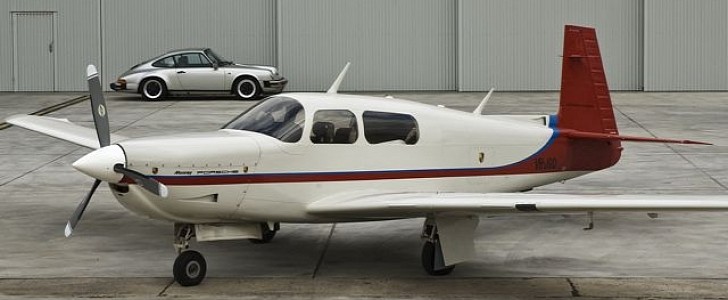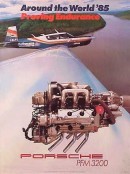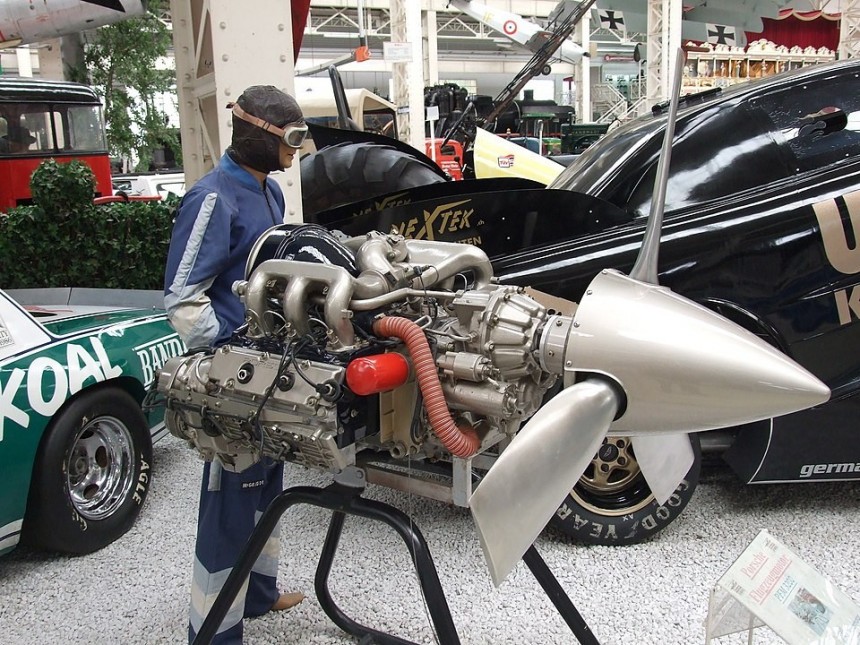Porsche is an automaker with its hands in every aspect of motorized vehicles at one point or another. From sports cars and luxury SUVs to war tanks and, believe it or not, even aircraft engines.
You may ask yourself why Porsche would spend company capital that should have been going into their sports cars to build engines for a market dominated by four or five major companies. The answer is simple. If Porsche didn't, their customers would do it for them, leaving them out of a profit.
The team at Stuttgart discovered in the early 1950s that their small but burgeoning customer base often had the means and the money to invest in private airplanes. These owners of the then-brand-new Porsche 356 discovered its four-cylinder boxer engine was an absolute gem. An engine that was peppy, compact, and relatively easy to maintain.
All the things that make any light aircraft engine worth discussing a viable platform. Porsche would collaborate with these boutique aircraft tuners and private owners between 1958 and 1963 with the 1.6-liter 60-ish horsepower 678 Series engine. This engine was not suitable for anything other than the lightest of recreational vehicles and ceased production in the early 1960s.
Porsche re-entered the aviation industry in the early 1980s. Many years of development had passed during the company's hiatus from the field. Now having access to what was then the latest generation of high-performance engines from their highly successful 911 series of sports cars. The boxer engine in the 911 of the early 80s powered one of the fastest and most powerful sports cars ever to come out of Germany at the time, the 930 Series 911 Turbo.
It was a 3.3 liter unit with an aluminum engine block with Bosch K-Jetronic fuel injection. Far larger than the 638 engines of old and far more technologically advanced as well. Pilots have been using forced induction to get more performance out of their wings since the Second World War. By the 1980s, such technology was ready to make its debut on the performance car market and, by extension, the light aircraft market as well.
Porsche designed aviation counterparts of their naturally aspirated engines as well. Making for a range of models designated N for N/A or T for turbocharged. Naturally aspirated models produced around 210 horsepower, and the force-induced T-Series mustered 240.
There was even a special model tuned to run on standard high octane automotive fuel. Making for an application that didn't even need an airport to get airborne. Just a big drum of petrol from your nearest filling station and a grassy field was all it needed.
The added Garret turbocharger helped the T-Series engines cruise as high as 18,000 feet of altitude (5486.4 m). The propeller driveshaft used a 0.442:1 reduction gearing in order to be useable with common aviation propellers from companies like Hamilton Standard
The Porsche PFM series of aerospace engines found their way onto a number of different private aircraft. Including the Cessna 172, Socata TB-16, Robub DR400, and the Mooney M20L. Only the M20L was given the green light for production, as others were confined to experimental prototype status. Around 80 operational units were delivered to customers between 1985 and 1991, of which 40 were Mooney M20Ls.
Cessna opted not to sign a long-term deal with Porsche for their much abundant 172. With over 40,000 units flying, such a deal would have been a game-changer for their fragile aviation division. Instead, production would cease entirely by 1991, with a guarantee that Porsche would support the engine's maintenance for a short period.
In September 2007, Porsche penned a letter to the Federal Aviation Administration that it would surrender its type certificate for the PFM series of engines and would cease supporting their upkeep in any shape or form. This prompted the FAA to issue an information advisory in 2009 to all registered private operators of the PFM engine type stating they'd essentially be on their own from then on when it came to maintaining their engines.
The engine type was allowed to keep its flight validation, at the very least. Still, Porsche's maintained that it would not export spare parts of any kind into the United States. Making its future as a viable engine platform very dubious indeed. In the meantime, you can have a look at Porsche's Aircraft engines in the flesh at the Technik Museum Speyer in Speyer (Rhineland-Palatinate), Germany. Check back for more great Porsche action on land, in the air, and on the battlefield during Porsche Month 22 right here on autoevolution.
The team at Stuttgart discovered in the early 1950s that their small but burgeoning customer base often had the means and the money to invest in private airplanes. These owners of the then-brand-new Porsche 356 discovered its four-cylinder boxer engine was an absolute gem. An engine that was peppy, compact, and relatively easy to maintain.
All the things that make any light aircraft engine worth discussing a viable platform. Porsche would collaborate with these boutique aircraft tuners and private owners between 1958 and 1963 with the 1.6-liter 60-ish horsepower 678 Series engine. This engine was not suitable for anything other than the lightest of recreational vehicles and ceased production in the early 1960s.
Porsche re-entered the aviation industry in the early 1980s. Many years of development had passed during the company's hiatus from the field. Now having access to what was then the latest generation of high-performance engines from their highly successful 911 series of sports cars. The boxer engine in the 911 of the early 80s powered one of the fastest and most powerful sports cars ever to come out of Germany at the time, the 930 Series 911 Turbo.
Porsche designed aviation counterparts of their naturally aspirated engines as well. Making for a range of models designated N for N/A or T for turbocharged. Naturally aspirated models produced around 210 horsepower, and the force-induced T-Series mustered 240.
There was even a special model tuned to run on standard high octane automotive fuel. Making for an application that didn't even need an airport to get airborne. Just a big drum of petrol from your nearest filling station and a grassy field was all it needed.
The added Garret turbocharger helped the T-Series engines cruise as high as 18,000 feet of altitude (5486.4 m). The propeller driveshaft used a 0.442:1 reduction gearing in order to be useable with common aviation propellers from companies like Hamilton Standard
Cessna opted not to sign a long-term deal with Porsche for their much abundant 172. With over 40,000 units flying, such a deal would have been a game-changer for their fragile aviation division. Instead, production would cease entirely by 1991, with a guarantee that Porsche would support the engine's maintenance for a short period.
In September 2007, Porsche penned a letter to the Federal Aviation Administration that it would surrender its type certificate for the PFM series of engines and would cease supporting their upkeep in any shape or form. This prompted the FAA to issue an information advisory in 2009 to all registered private operators of the PFM engine type stating they'd essentially be on their own from then on when it came to maintaining their engines.
The engine type was allowed to keep its flight validation, at the very least. Still, Porsche's maintained that it would not export spare parts of any kind into the United States. Making its future as a viable engine platform very dubious indeed. In the meantime, you can have a look at Porsche's Aircraft engines in the flesh at the Technik Museum Speyer in Speyer (Rhineland-Palatinate), Germany. Check back for more great Porsche action on land, in the air, and on the battlefield during Porsche Month 22 right here on autoevolution.







